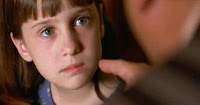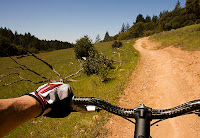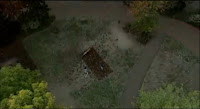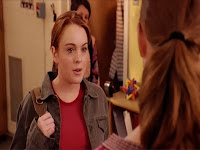When directors or photographers are filming or taking pictures there are a wide range of shot types and camera angles that they can use. Each shot type and camera angle has a different effect that manipulates the audience to think or feel in a certain way.
1. Close up - A close up shot is usually used to show emotion or a reaction. It is used so that the audience clearly knows how the character is feeling.
2. High angle shot - A high angle shot is used to make the audience feel more powerful then the character on the screen or in the picture. It also creates an element of mystery. However this shot can also be used to show difference in status.

3. Two shot - A two shot is used to focus on two important people in the screen. There may be other people in the frame however they are usually out of focus.
4. POV shot - A POV shot is a shot that shows the audience what the character can see. It is used to make the audience feel connected and closer to the character.

5. Low angle shot/Worms eye shot - The shot is used to make the audience feel intimidated or dominated by something else. It can also be used to show a sense of scale.
6. Tilt shot - A tilt shot is used a dis-orientation method. It makes the audience feel (literally) thrown sideways. It can also be used to make a character look heroic.
7. Long shot - This kind of shot is used so that more can fit in the frame. It puts the figure into context because the audience can see the background and other objects.
8. Mid shot - This shot often contains a lot of people in the frame from the waist upwards. It is used to focus on the main characters and surrounding characters.

9. Extreme close up - An extreme close up is used to focus on an important object or feature so that the audience are aware of it.
10. Establishing shot - An establishing shot is to make the audience aware of the characters surroundings. These kind of shots can also often be used as quick fillers during programmes.
11. Pan - This is when the camera pans over an area or setting, however the camera does not move, it stays in one spot and just moves on it's stand.
12. Aerial/Crane shot - This shot is used to show the action beneath down below.

13. Tracking shot - This is similar to a pan shot, however with a tracking shot the camera moves with the action often along a track. This helps the audience to keep up with action as it is happening.
14. Over the shoulder shot - This shot is when you can see the characters shoulder out of focus and the object or person that they are looking at in focus. This shot gives of a sneaky element and makes the audience feel as if they are prying into the characters life.


No comments:
Post a Comment